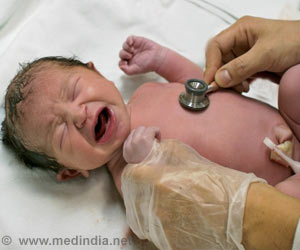Eosinophilic Esophagitis (EE), a disease, first described in children only 20 years ago, but has shown a rising incidence in both children and adults
Eosinophilic Esophagitis (EE), a disease, first described in children only 20 years ago, but has shown a rising incidence in both children and adults. It is said to be an inflammatory condition of the esophagus, symptoms of which includes vomiting, heartburn and difficulty in swallowing.
In findings published on line January 10, 2007 in the Journal of Allergy & Clinical Immunology, researchers at the University of California, San Diego (UCSD) School of Medicine and Rady Children's Hospital and Health Center, San Diego show that the disease causes many of the same kinds of tissue changes seen in pediatric asthma. Their research may lead to new drug targets for EE, which appears to be allergy-driven in some patients.The esophagus is the soft tube-like portion of the digestive tract that leads from the back of the mouth to the stomach. In patients with EE, the disease leads to scarring and narrowing of the esophagus, so that food can't readily pass through it.
"We set out to find whether the kind of structural changes seen in other long-standing inflammatory diseases like childhood asthma also occur in EE," said Seema Aceves, M.D., Ph.D., of UCSD's Allergy Immunology section of the Department of Pediatrics. Aceves is also a physician at Rady Children's Hospital in San Diego and directs a treatment center for children with eosinophilic gastrointestinal disorders.
The research team studied biopsies of the esophagus from children with an initial diagnosis of EE who had not yet been treated, comparing them to biopsies of children with acid reflux disease as well as those of children with normal esophageal biopsies.
"We found fibrosis, or scarring, as well as remodeling of the esophagus in pediatric EE patients which is similar to airway remodeling found in patients with asthma," said Aceves.
Remodeling occurs in chronic inflammatory diseases such as asthma and results in alterations in structural cells and tissues not found in normal tissues. The UCSD study showed that children with EE were found to have previously unrecognized changes to their esophagus, including an increased number of blood vessels in the sub-epithelium, the region below the surface of the interior lining of the esophagus.
Advertisement
These studies – performed by Aceves through an ongoing collaboration with the laboratory of David Broide, M.B. Ch.B., professor of medicine at UCSD School of Medicine and an expert in airway remodeling in asthma – identified three molecules that contribute to these changes in the esophagus, and could provide new therapeutic targets for EE.
Source-Eurekalert
SRI





